Welcome to the 2020 edition of Quill & Pad’s early Grand Prix d’Horlogerie de Genève predictions in which the team picks favorites and explains why.
The panelists are:
Elizabeth Doerr (ED), co-founder and editor-in-chief
Ian Skellern (IS), co-founder and technical director
Joshua Munchow (JM), resident nerd writer
GaryG (GG), resident collector
Martin Green (MG), resident gentleman
The GPHG foundation describes the Aiguille d’Or as “. . . rewarding the best overall watch among all the categories (best in show), also deemed the most representative of the watch industry as a whole. It is the most prestigious award.”
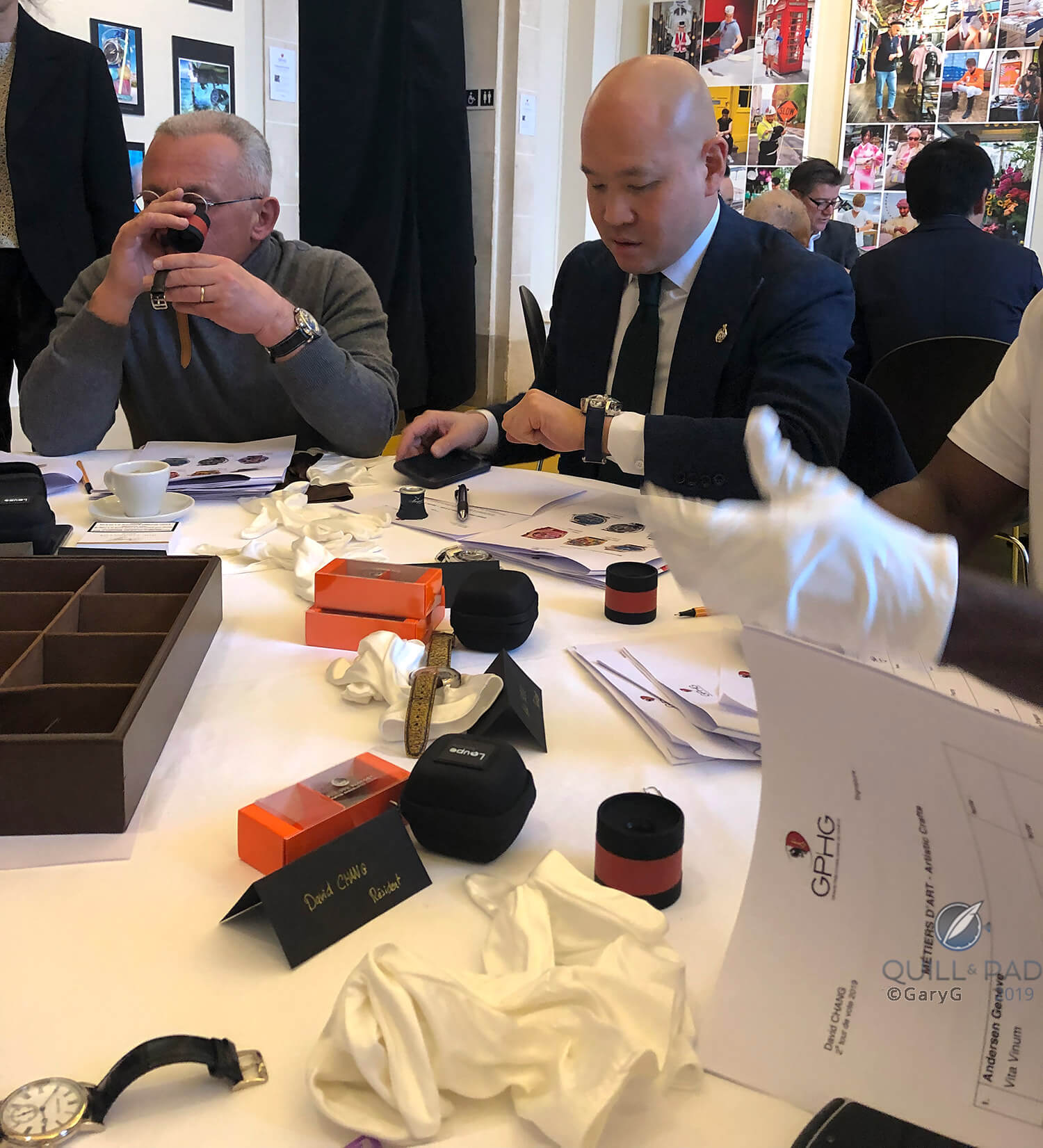
2019 GPHG jury members deliberating on the day of the final vote
ED: And we finally come to the Aiguille d’Or, which is really down to individual interpretations. To me the watch chosen here should be a whole package: one that combines several elements that stand out, not only focusing on either the most complicated or a particular technical breakthrough. As Sean Li wisely put it in one of our round tables last year, “It should be a so-called ‘grail’ watch.”
GG: I’ll confess that in my two years of recent service as a GPHG juror I didn’t come into the room either time with the grand prize winner as my favorite. I found the opportunity to handle the watches and to hear the insights of the other jurors to be tremendously informative, and my thoughts in this virtual discussion miss both of those. Nonetheless I’ll soldier on!
As usual, I reviewed the entire list of finalists to choose a subset – this year it included six watches – of pieces that I thought had special merit, and then stared at them and re-read their descriptions until I arrived at a winner.
IS: For me the 2020 Aiguille d’Or is down to two watches, and splitting them isn’t easy. However, help is at hand: while it is fairly widely known that the Aiguille d’Or is the GPHG’s Best of the Best, the rules also state that the prize should go to the watch, “. . . deemed the most representative of the watch industry as a whole.” And that’s the criteria I’ll use to help me to filter the best from the best.
JM: The toughest watch to predict most years is the Aiguille d’Or because there are always at least a handful of worthy watches, and this year is no different. I always look back to see if the brands of any of my favorites have won in the last half decade, and in this case two have: Greubel Forsey for the Tourbillon 24 Secondes Vision in 2015 and Ferdinand Berthoud with the FB 1 in 2016, but that is far enough in the past that I think they both won’t be casually moved aside for other brands to win.
I know there are politics involved so that is often a wild card to accommodate for, but in my mind at least five pieces could easily deserve a win, with most agreeing that each one of the most incredible watches of the year. But I will also be honest and try to assess which has more likelihood of winning and why.
For that reason, I think I can safely eliminate two of my top five picks from the running. The first is the Piaget Altiplano Ultimate Concept. It is a fantastic watch, record breaking, and a feat of engineering. But I also think it may be a bit too niche as the hyper-thin watch that it is and so has less broad appeal to the entire jury. So while I think it easily deserves glowing praise and recognition, I am trying to predict the outcome, and I think the jury may pass it over in favor of others.
The second incredible watch that I think is out of the running is the Bernhard Lederer Central Impulse Chronometer for the simple reason that it is extremely complex in its horological theory, but technically hasn’t gotten the numbers to back it up yet (they are coming, and since I also think the version submitted was the less attractive version, it could also be a bit too niche to take the Aiguille d’Or from the other competitors. It is easily one of the most visually impressive movements I have seen in a long time, but a jury is fickle.
But I do have three top watches that I think have a great chance of winning the Aiguille d’Or this year.
ED: I too have three top contenders in my head this year, Joshua. How much you wanna bet they’re the same ones?
MG: Calling the Aiguille d’Or seems to be more challenging than ever, as there are so many deserving watches!
ED: Also to remember when we watch the awards ceremony on November 12 here on Quill & Pad: the GPHG foundation avoids a watch winning more than one prize, and as such the watch that wins the Aiguille d’Or is removed from the category it was originally entered into. However, that also means that the watch that then wins the relevant category didn’t actually win; it came second.
Ferdinand Berthoud FB 2RE.2
GG: Ferdinand Berthoud has been on top at the GPHG before, in 2016, and this year’s entry is a stunner as well, with its characteristic bridge and pillar architecture, escape-mounted remontoir, and gorgeous enamel dial among other features. And it keeps great time! I’ll put this one in second place overall as there’s really very little to criticize and a lot to like.

Ferdinand Berthoud Chronomètre FB 2RE in pink gold
MG: I honestly didn’t think that a watch by Ferdinand Berthoud could get better, Gary, but the Ferdinand Berthoud FB 2RE.2 proved me wrong: the brand has already made watches I find difficult to surpass, yet that has just happened. The finishing is breathtaking, and I think that this escapement is spot on. I prefer it over the previous tourbillon editions. The new case is probably more palatable to a larger group of potential clients. Although I like it just as much as the case on the previous models, I do think that its most significant advantage is the stunning two-level enamel dial.
JM: This is a more classical watch than the one the brand won with back in 2016 and could play well to today’s jury. When you add to that the fact that the movement is worthy of being framed and displayed as mechanical art, it is hard to say that aesthetically the FB 2RE.2 is anything short of a masterpiece.
ED: I agree wholeheartedly with that, Joshua. The looks of this timepiece are truly masterful . . . as are its proven mechanical chops.

Back of the Ferdinand Berthoud Chronomètre FB 2RE in pink gold
JM: As you just alluded to, Elizabeth, the chronometric data for this watch has recently been made available and, well, it is a very, very, very good result. With an average of only 2 degrees of amplitude variation for the balance and an average rate deviation less than 0.5 seconds a day over 15-days, this watch is what you would call bonafide-super-accurate. Basically, the theory and execution of the movement was spot on and this watch lives up to any hype.
So it looks incredible, works like a scientific instrument, and is the most affordable out of my top three, which might make it not win the Aiguille d’Or. Honestly, I don’t know, and I don’t know if you could argue against it winning even given how incredible the other watches are. If it doesn’t win the Aiguille d’Or then it deserves to win at least the Chronometry prize or some other jury prize.
IS: When I had the opportunity to see the Ferdinand Berthoud FB 2RE.2 during Geneva Watch Days, it took my breath away. The design, complications, movement architecture, and hand-finishing were all just sensational. And Ferdinand Berthoud has released testing results that highlight that it truly is worthy of the chronometer title. This is an extremely accurate mechanical watch. I can easily see the FB 2RE.2 winning the Aiguille d’Or, and I’ll be cheering if it does, but it’s my extremely close runner up.
ED: I predict that the Ferdinand Berthoud FB 2RE.2 will very likely take the Aiguille d’Or, just barely nudging out Greubel Forsey’s Hand Made 1 by a fraction of a fraction of a whisker. I really, really wish there could be a tie function here . . . for me, they are tied.
Further reading:
Ferdinand Berthoud Chronomètre FB 2RE: Change Is Round
Who Was Ferdinand Berthoud And Why Should We Care?
Quick Facts Ferdinand Berthoud Chronomètre FB 2RE
Case: 44 x 14.3 mm, white or pink gold
Movement: manufacture Caliber FB-RE.FC, 18,000 vph/2.5 Hz frequency with chain-and-fusée and one-second remontoir d’egalite, suspended spring barrel, Maltese cross stopwork system, variable inertia balance, power reserve 50 hours; 1,200 components, including 790 for the chain, 26 bridges German silver, and 10 pillars, officially C.O.S.C. chronometer-certified
Functions: hours, minutes, deadbeat hacking seconds; power reserve indicator on back
Limitation: 10 pieces in each color
Price: 210,000 Swiss francs
Greubel Forsey Hand Made 1
GG: That brings me to my winner, the Hand Made 1 from Greubel Forsey. As we’ve come to expect from Greubel Forsey, everything about the appearance and function of this watch is as close to perfect as can be; and achieving this with all but a few components made by hand is even more remarkable. I had the opportunity to handle this watch at Dubai Watch Week 2019, and to show you how much of a roll GF are on these days it was my second-favorite watch of the show – behind the Greubel Forsey GMT Sport! In the absence of that watch in this year’s GPHG contest, however, I’ll happily go with the Hand Made 1.
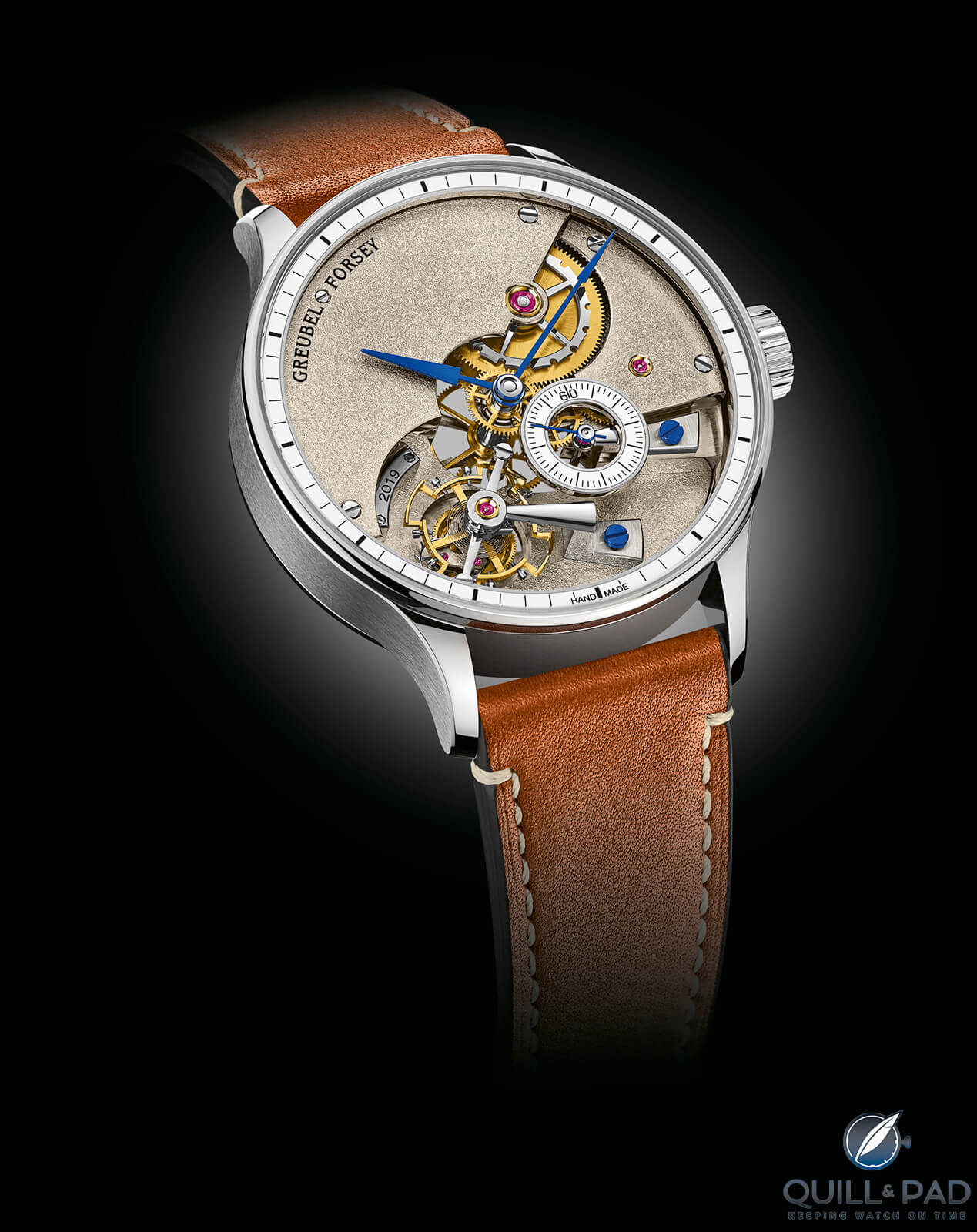
Greubel Forsey Hand Made 1
MG: I considered several watches for the top spot, the first being the Greubel Forsey Hand Made 1. I honestly didn’t think that a Greubel Forsey could get any better, yet the brand proved me wrong. It is a watch that gave me goosebumps when I first handled it, and those goosebumps even intensified when I examined the watch under a loupe. An incredible achievement!
JM: I have never met a person who cannot find a Greubel Forsey watch that blows them away; it’s almost as certain as death and taxes. The Hand Made 1 is likely that watch to more people than my favorites (Invention Piece 1, anyone?), and given that the watch was made in the most traditional way possible and it still looks and functions this darn good is enough to get any horology fan drooling. It is the pinnacle of manual watchmaking in the modern world with fundamentally perfect finishing and impossibly crisp, well, everything.
Unless it just isn’t aesthetically your cup of tea, I don’t think a reasonably justified argument could be made against it. It feels like it could easily be the watch of the year, and the jury may agree.
ED: Yes, Joshua, the jury may well agree. Seriously, I don’t think I can choose between the Ferdinand Berthoud and this one, so I’ve decided to call a tie for my prediction. Then I have a 50-50 chance of being right.

Greubel Forsey Hand Made 1: note the ‘hand made’ in place of ‘Swiss made’
IS: I’m calling the Greubel Forsey Hand Made 1 the winner of the 2020 GPHG Aiguille d’Or. As a superlative watch I’m like you, Elizabeth, in not being able to split Hand Made 1 and the Ferdinand Berthoud FB 2RE.2. However, I think that it has the edge by being more representative of the future of the watch industry. It seems to me that for too long, many, if not most, high-end brands have been using consumers’ cognitive dissonance to sell mass-market products as exclusive products (thereby reaping the profit markups). There’s usually a big chasm between the claims of the marketing blurb and actual amount of hand work going into luxury watches.
Handcraft is very time consuming, and the world’s best watchmakers are expensive. A million dollars is an incredible amount of money for a wristwatch, but eye-watering expensive isn’t incompatible with value for money. Hand Made 1 is pure horological art. It’s my winner of the 2020 Aiguille d’Or.
Further reading:
Greubel Forsey Hand Made 1: Hands Breathing Life Into Metal
Greubel Forsey Hand Made 1: Making A Watch The Traditional Way (Video)
Quick Facts Greubel Forsey Hand Made 1
Case: 43.5 x 13.5 mm, white gold
Movement: manual winding Caliber Hand Made 1 with one-minute tourbillon, 3 Hz/21,600 vph frequency, 60-hour power reserve, 95% made by hand
Functions: hours, minutes, seconds
Limitation: 2-3 per year
Price: 1 million Swiss francs
Armin Strom Minute Repeater Resonance
JM: It is hard to argue with a resonance watch with a minute repeater, all visible on the dial side of the watch, built by an independent brand like Armin Strom. The watch is visually impressive but not too “wild”; it has technological and horological chops for traditionalists and modernists alike; it sounds great; and has solid timing numbers to boot. Really, it is the entire package unless you want a visually classic watch, which this is not.
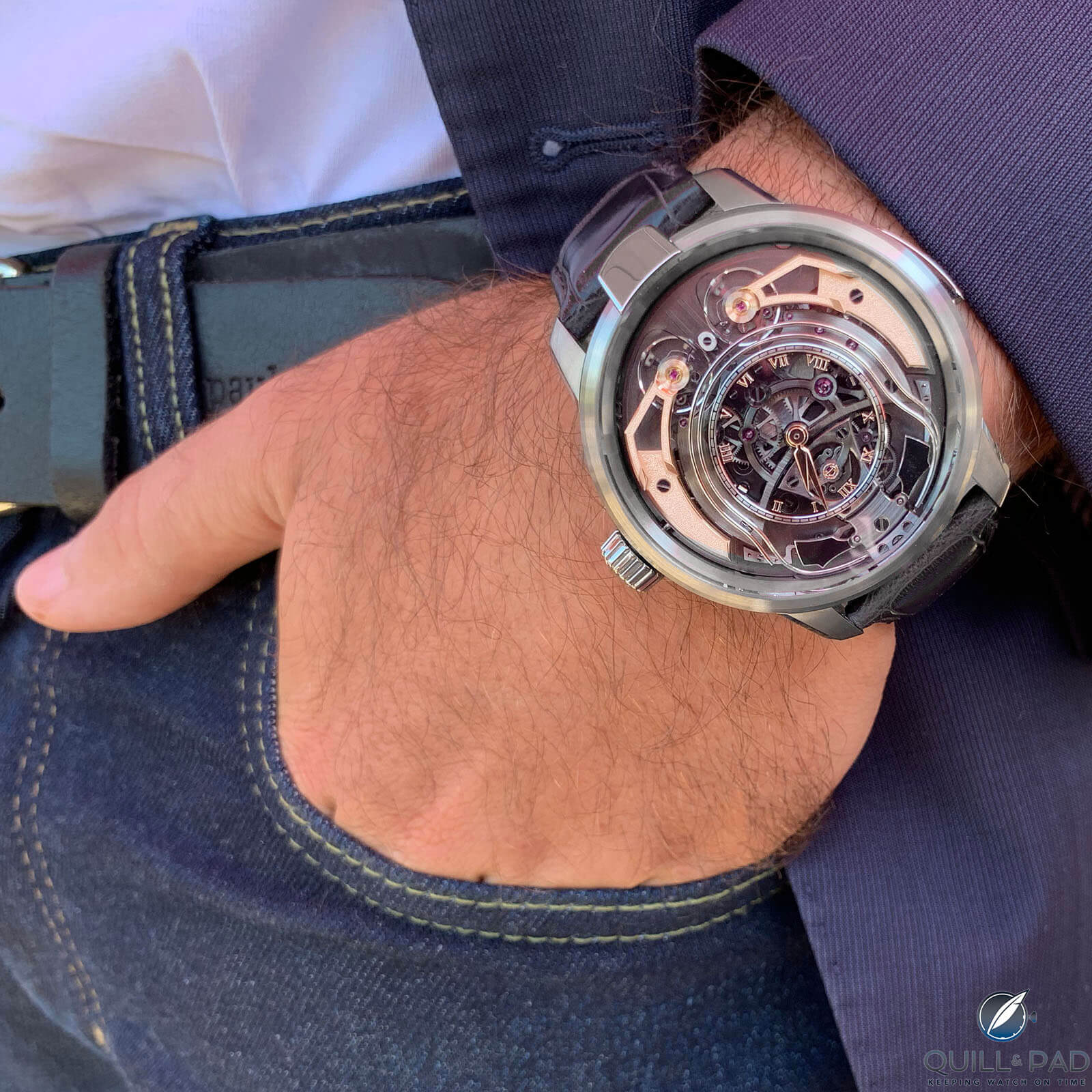
Armin Strom Minute Repeater Resonance on the wrist
ED: The Armin Strom Minute Repeater Resonance is one of the most impressive watches I’ve ever seen with its resonance system in combination with a repeater – with all of the above-mentioned visible from the dial side! It is simply mind-blowing to me. It makes sense, the mechanics are extravagant, and they work reliably.
IS: The Armin Strom Minute Repeater Resonance is my pick for the Mechanical Exception category. I’d be very surprised if the world’s first minute repeater with resonant regulators isn’t recognized by the jury.
JM: I don’t think there is anything about this watch you could say is an objective negative; it checks all the boxes for what an Aiguille d’Or watch should be.
ED: I would hope that it either wins its own Mechanical Exception category or this one. I do think that its more “complicated” visuals will likely keep it from the Aiguille d’Or and the jury will pick another watch with more conventional looks, which is why I’m not choosing it as my winner here.
Further reading: Armin Strom Minute Repeater Resonance: Synchronized Oscillations Driving Sonorous Vibrations (Plus Video – It Sounds Fantastic!)
Quick Facts Armin Strom Minute Repeater Resonance
Case: 47.7 x 16.1 mm, titanium
Movement: manual winding Caliber ARR18 with two symmetrically mirrored regulators resonating at 25,200 vph, 408 components, 96-hour power reserve
Functions: hours, minutes; minute repeater
Limitation: 10 pieces
Price: starting at 380,000 Swiss francs (may be customized)
Piaget Altiplano Ultimate Concept
GG: A final Innovation Prize candidate (yes, I know this is supposed to be about the Aiguille d’Or!) and a watch that I expect the jury to give serious Aiguille d’Or consideration is the Piaget Altiplano Ultimate Concept. I think it’s an admirable technical achievement, but on the wrist its 41 mm diameter seems odd for its 2 mm thickness and I’m not sure that “making it thinner” makes this the watch of the year.
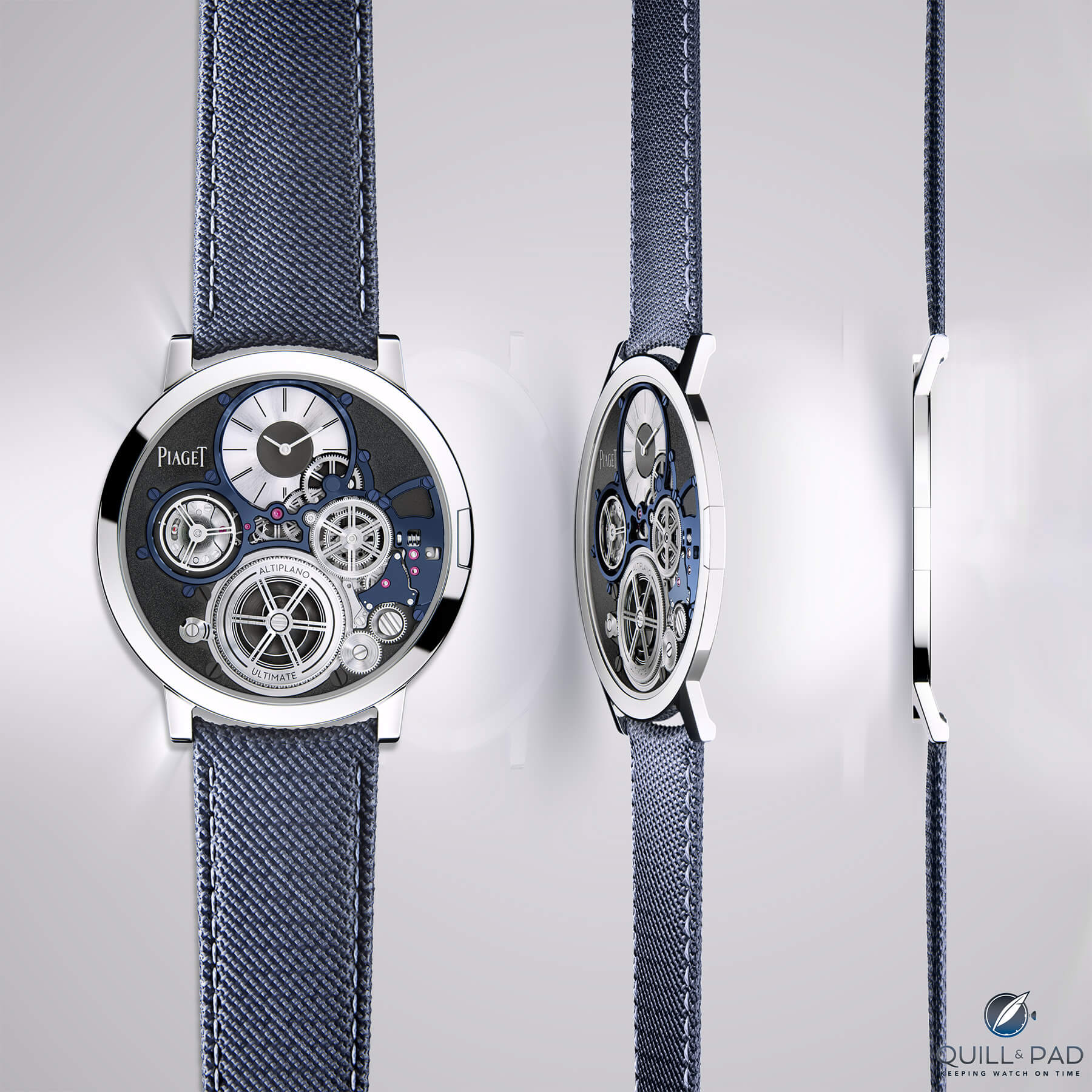
Piaget Altiplano Ultimate Concept
ED: I tend to agree with you, Gary, though I do also agree it could be a great candidate for the Innovation Prize. We’ll see on Thursday whether everyone else thinks along the same lines. It could well end up with the Aiguille d’Or!
IS: As incredible as the Piaget Altiplano Ultimate Concept is, I can’t see it being a contender for the Aiguille d’Or. Perhaps the Innovation prize though.
MG: As good as these other watches are, I have to give my Aiguille d’Or to the Piaget Altiplano Ultimate Concept, guys. A mechanical watch, commercially available, 2 mm in height: that is all there is to say about this watch. It is breathtakingly beautiful, the parts are even finished, it works, you can wear it going about your day, and it was previously technically held impossible to make. If that’s not enough to win the Aiguille d’Or, I don’t know what is.
Further reading:
Piaget Altiplano Ultimate Concept, The World’s Thinnest Watch: Shaving Microns To Make Millionths
Top 10 Thinnest Mechanical Wristwatches: 8 Modern Record Holders And Their 2 Historic Rivals
Quick Facts Piaget Altiplano Ultimate Concept
Case: 41 x 2 mm, cobalt alloy, sapphire crystal 0.2 mm in height, flat telescopic crown
Movement: ultra-thin manual-wind Caliber 900P-UC, 28,800 vph/4 Hz frequency, 40-hour power reserve
Functions: hours, minutes
Limitation: 3 per year, by special order only, only available through Piaget boutiques
Price: 410,000 Swiss francs
Honorable mentions
GG: The Petermann Bédat has a great deal to recommend it, including its Gafner system dead seconds mechanism, attractive and unusual movement-side architecture, classical finishing, and attractive dial-side looks courtesy of the visual language developed by designer Barth Nussbaumer. It clearly benefits both from the creativity and dedication of its makers and the learned input of Dominique Renaud. It’s not my pick for the top award, but I can easily imagine it taking home the Revelation prize.

Petermann Bédat Seconde Morte
ED: Now this is an interesting duo and watch! I look forward to seeing them evolve. And they could possibly be up for a different prize this year – what about Horological Revelation? That prize rewards young brands no more than ten years old.
IS: I’m with you there Elizabeth, if the Petermann Bédat Seconde Morte doesn’t win the Men’s prize then I think it will be hard to beat for the Horological Revelation prize.
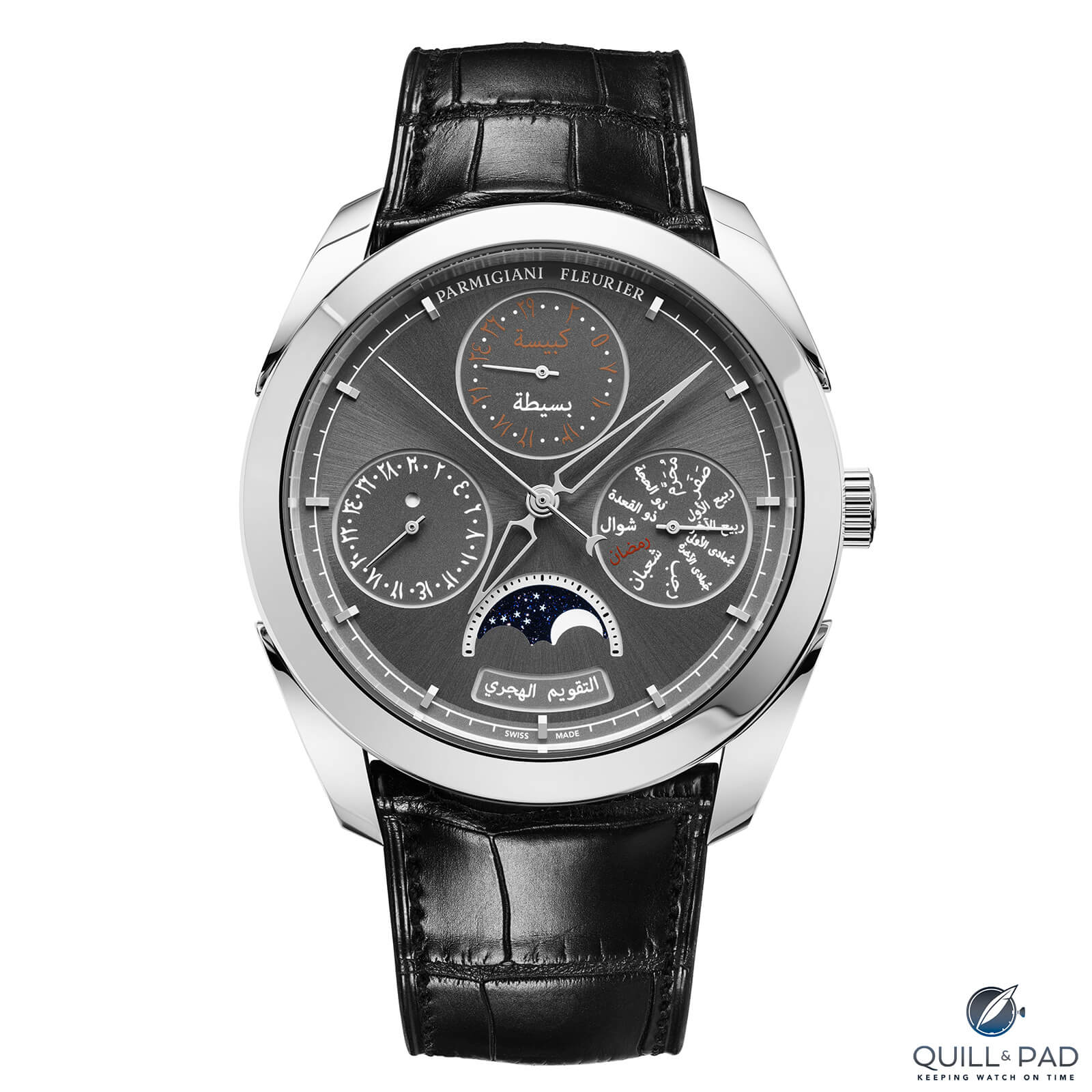
Parmigiani Fleurier Hijiri Perpetual Calendar
GG: The Parmigiani Fleurier Hijri Perpetual Calendar continues to impress me; I know that some of my colleagues here felt that it could have been dressed up visually a bit more to make a bigger impression, and ultimately I feel that the finishing and case details are perhaps not up there with my top choices, but I still believe that its interesting complication and Arabic-themed architectural elements deserve a mention, and this piece could have a chance for the Innovation Prize as well.
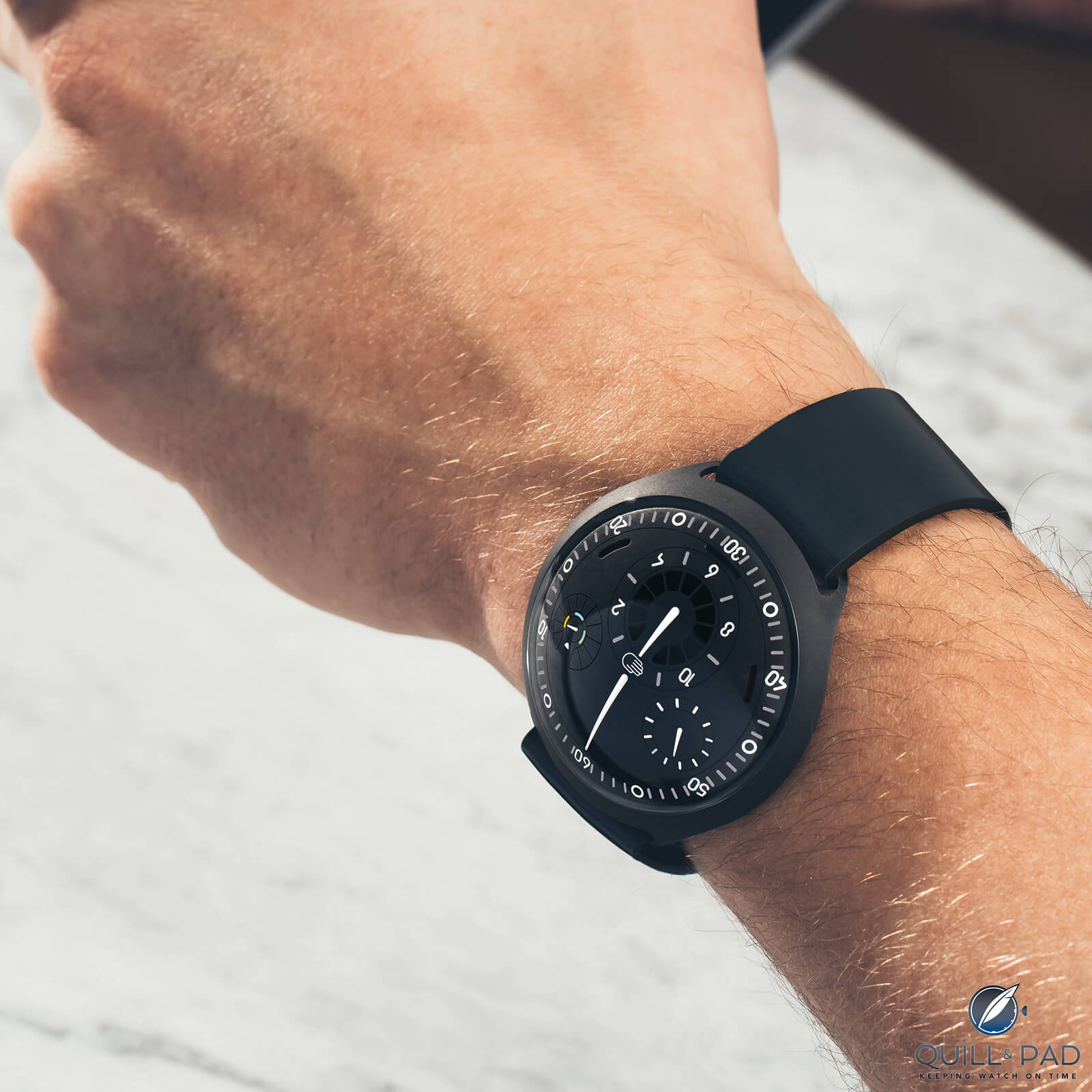
Ressence Type 2A on the wrist
ED: Yes, Innovation Prize is a good call, Gary. But I think the Ressence Type 2A also might fit well there.
IS: I also think that the Ressence Type 2A has a strong shot at the Innovation prize.
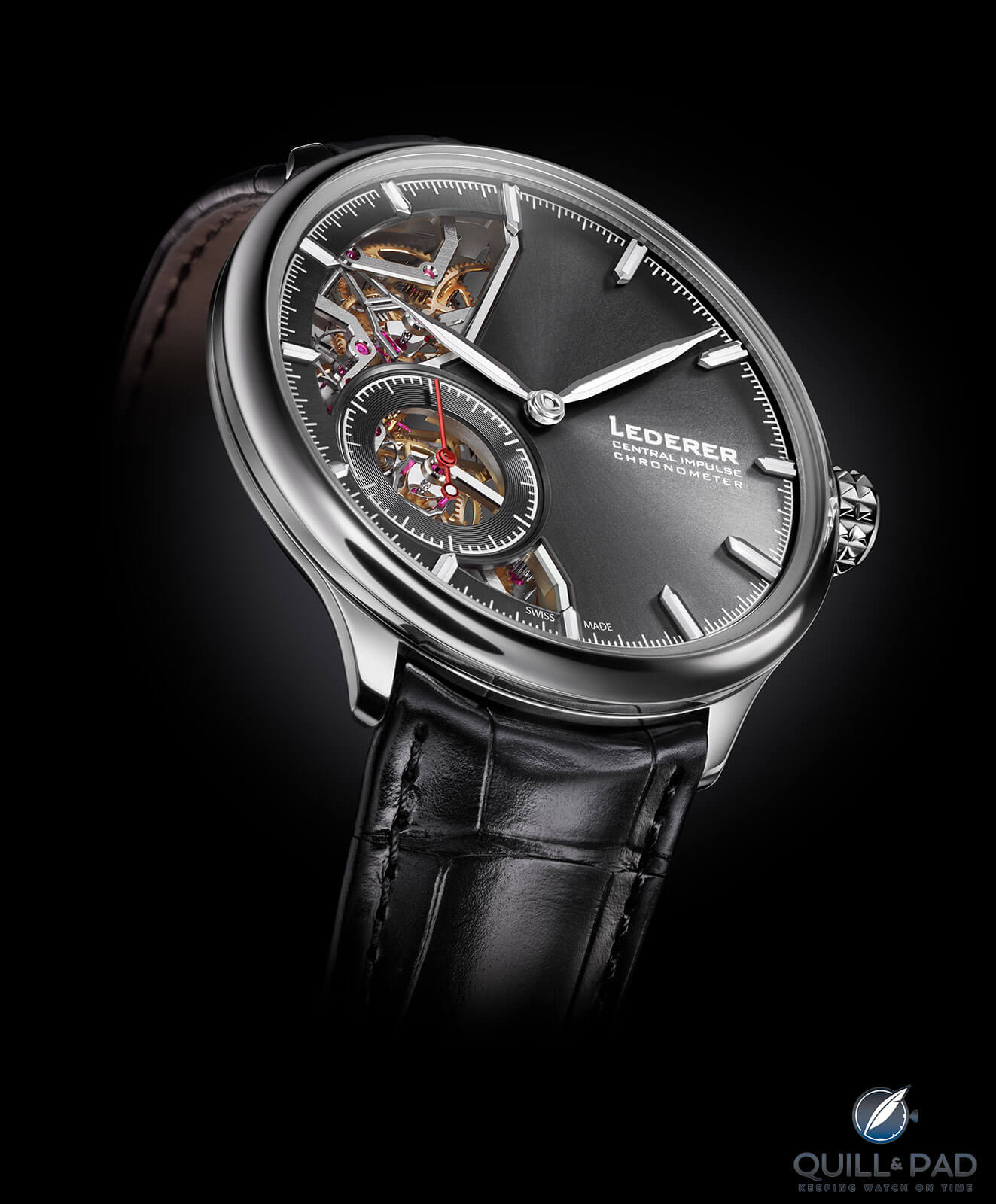
Bernhard Lederer Central Impulse Chronometer in white gold
GG: Another Innovation Prize possibility, in my view, is the Bernhard Lederer Central Impulse Chronometer with its natural escapement. As I commented in our earlier discussion, the dial-side visuals on this one keep it from being a truly transcendent piece in my estimation, but that takes nothing away from the technical accomplishment and attractive movement construction.

Stunning view through the display back to the movement of the Bernhard Lederer Central Impulse Chronometer
IS: I wonder if the Bernhard Lederer Central Impulse Chronometer might also have a chance at the Revelation prize? Bernhard Lederer has been making superb timepieces for decades (does anyone remember the BLU MT3 Triple Tourbillon?) so it’s easy to dismiss him as an old brand, but the Central Impulse Chronometer is actually the first watch by the recently launched Bernhard Lederer brand.
ED: I do feel that the Lederer piece needs to prove itself first before being considered for the top prize. We have all only seen photos of it, nothing more. In contrast, we have handled the other watches discussed here in consideration for the Aiguille d’Or many times and in some cases even seen chronometric or other data. It’s not an unimportant consideration. That said, my colleagues are right: the photos of this movement make it out to be an absolute stunner.
Predicted Winner
Gary: Greubel Forsey Hand Made 1
Ian: Greubel Forsey Hand Made 1
Martin: Piaget Altiplano Ultimate Concept
Joshua: Ferdinand Berthoud FB 2RE.2
Elizabeth: tie between Ferdinand Berthoud FB 2RE.2 and Greubel Forsey Hand Made 1
You may also enjoy:
Leave a Reply
Want to join the discussion?Feel free to contribute!









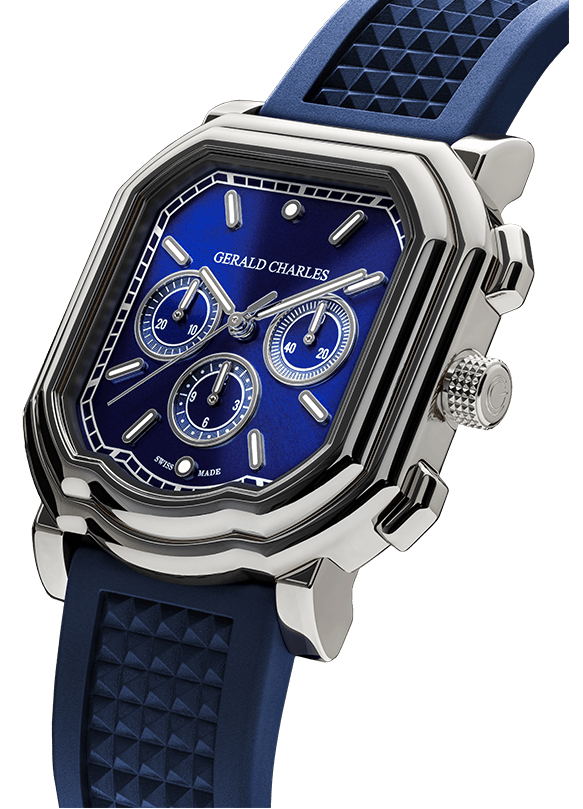


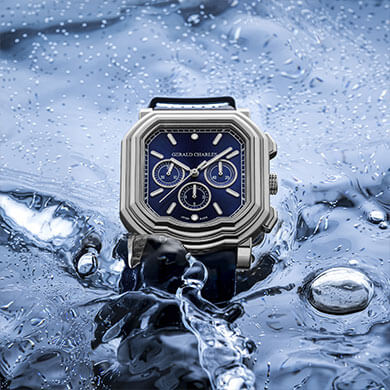

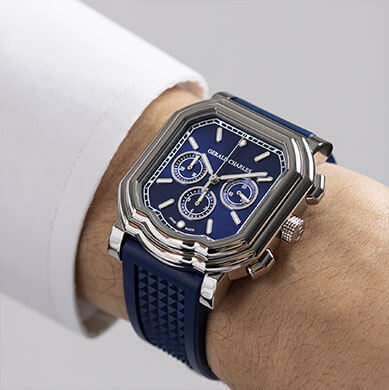



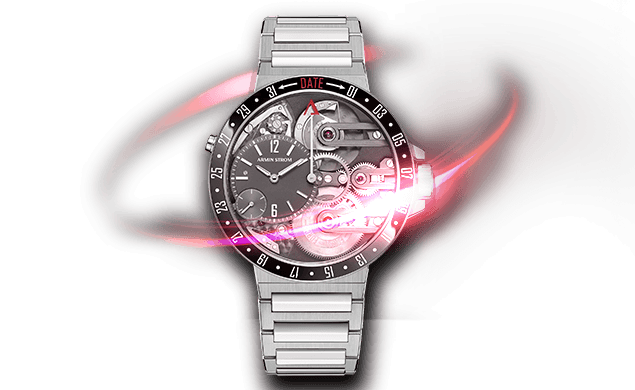
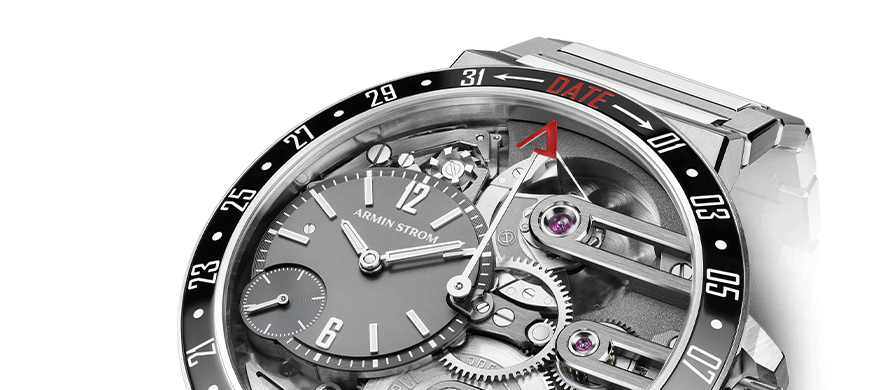
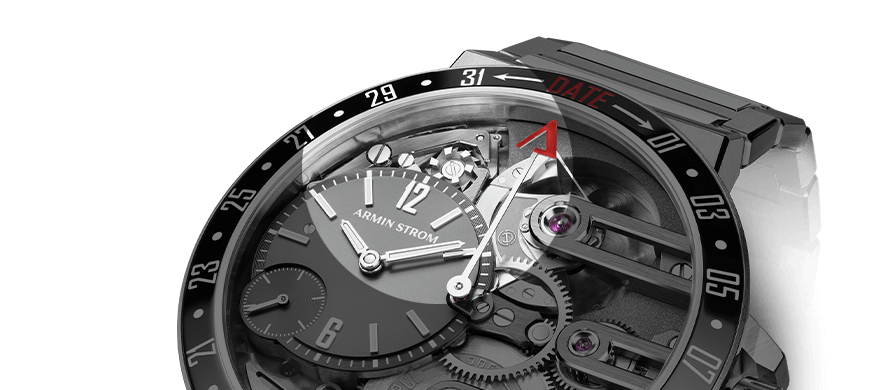


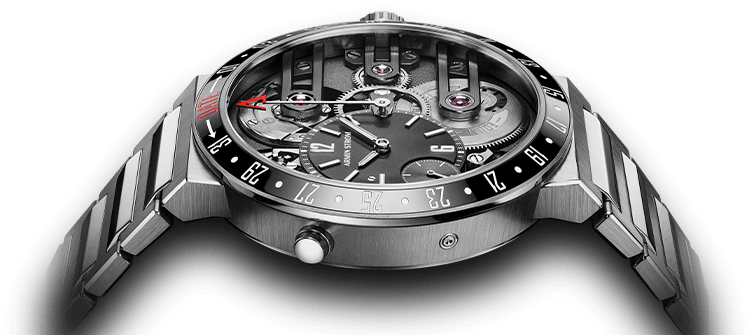


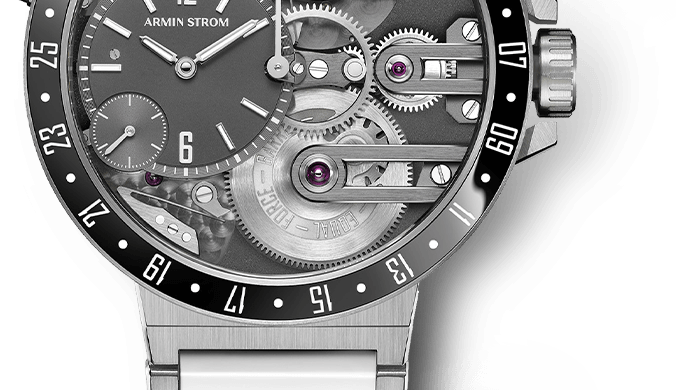



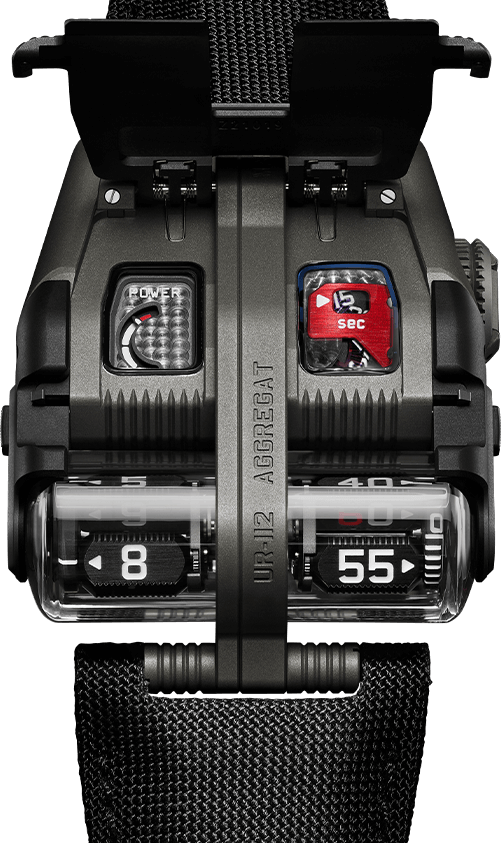

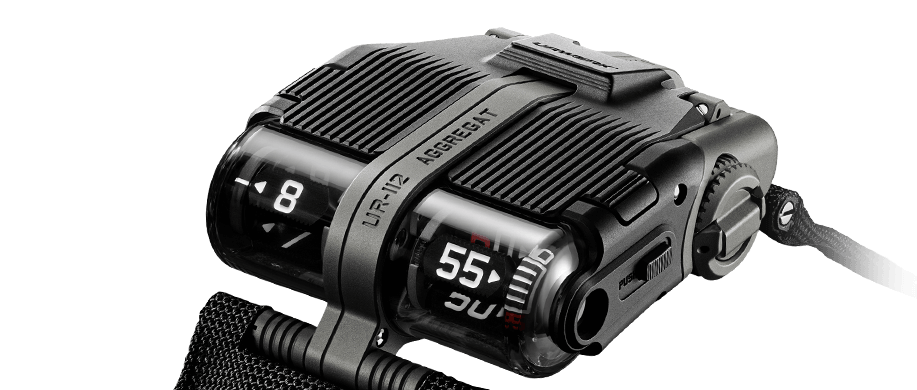

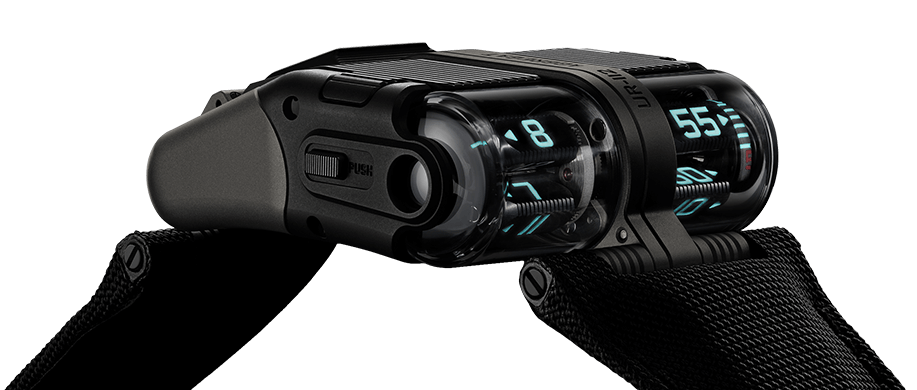


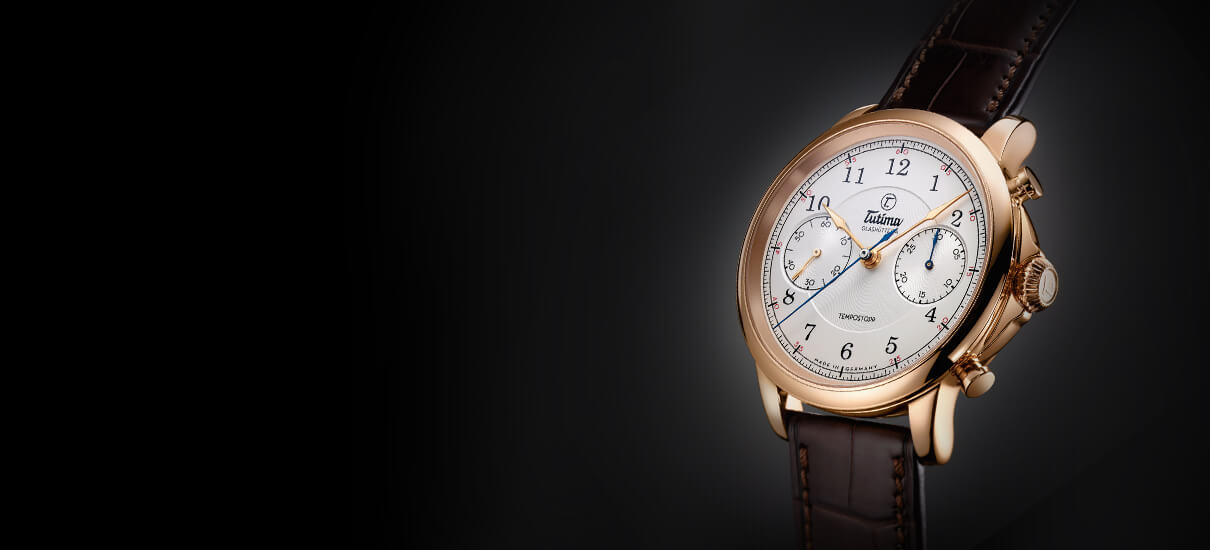

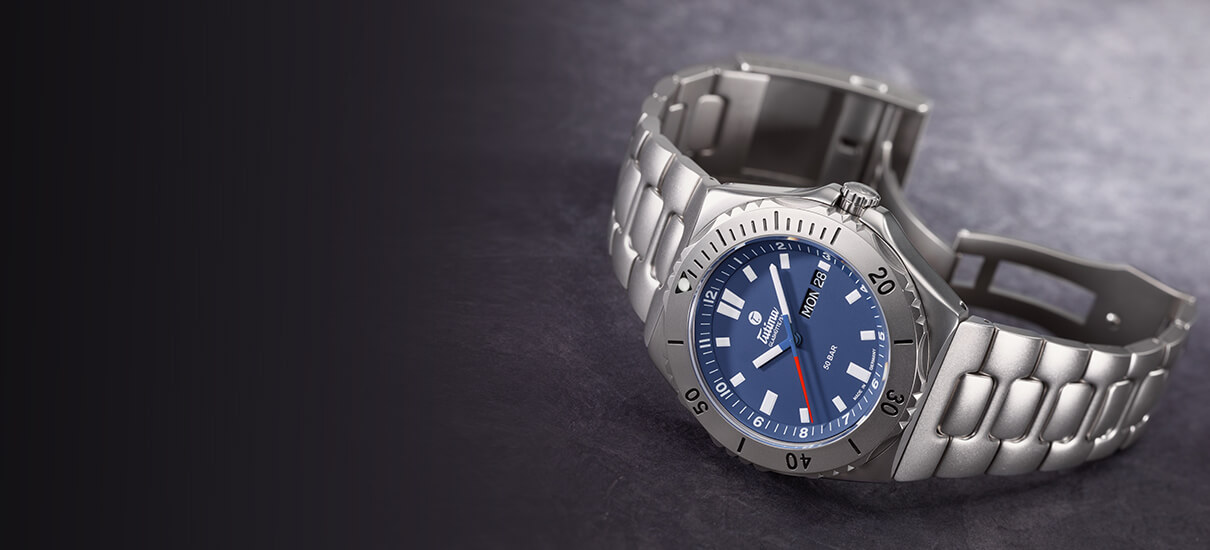

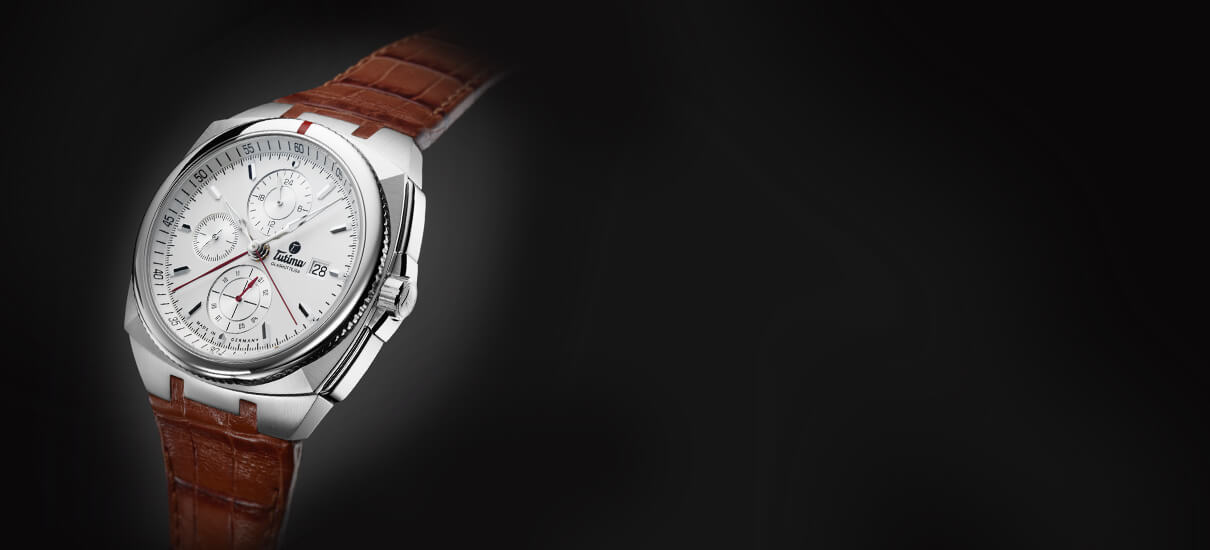

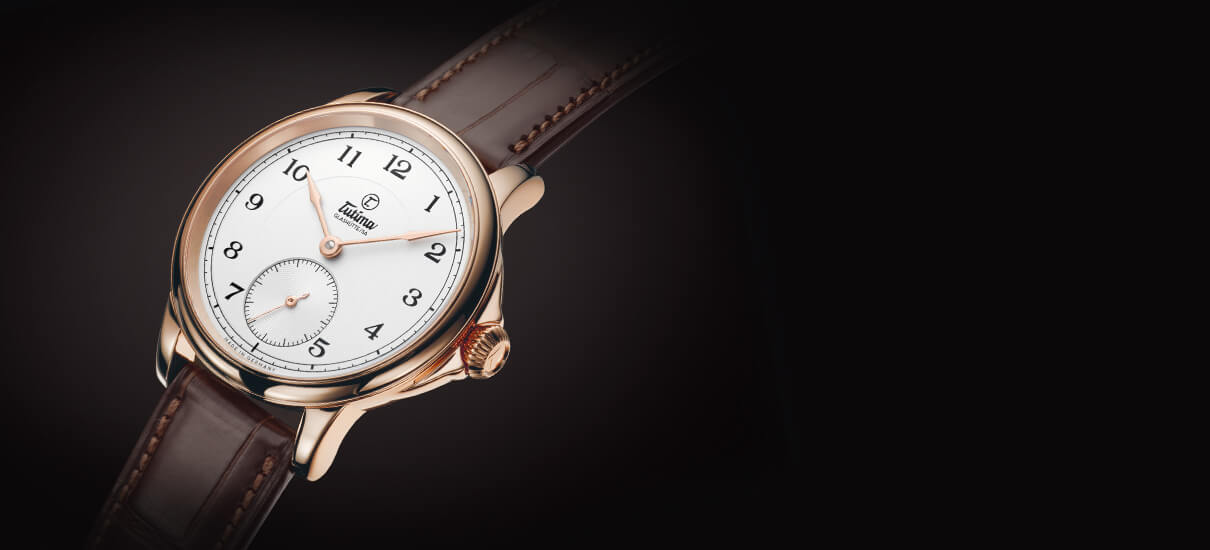

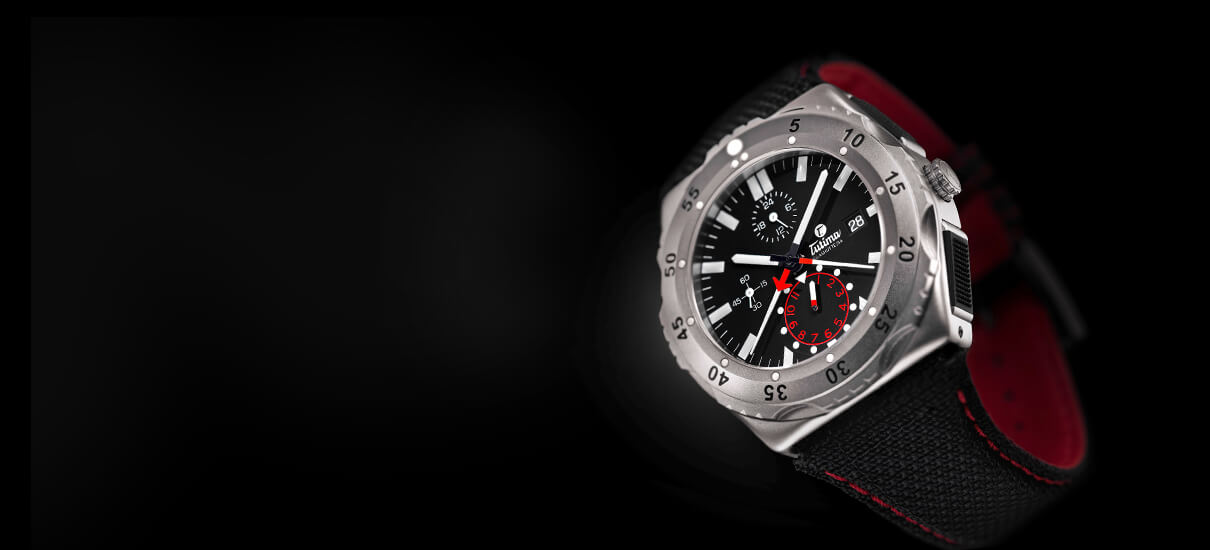



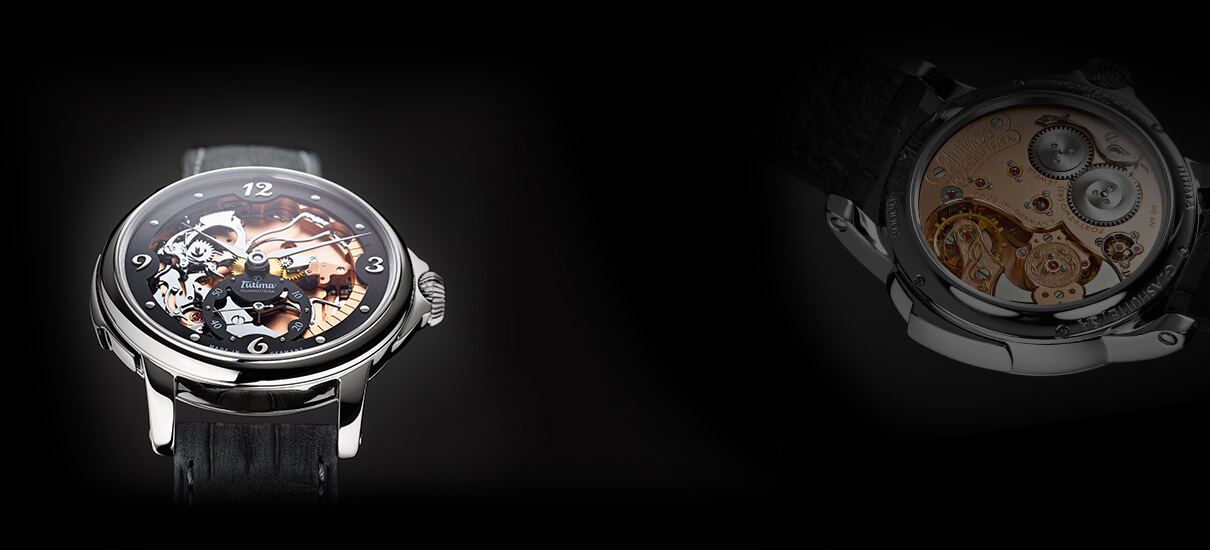



If it were down to Forsey, Berthoud, and Strom, I’d be happy with any of them as winners.
Looking forward to the ceremony.
Yes, any of those would be a great outcome.
The Ferdinand Berthoud FB 2RE.2 appeals to me, it’s just a beautiful watch – the dial is perfectly executed, the exposed movement on back is a very nice touch.
The Greubel Forsey, while acknowledging it’s technical prowess, does nothing for me. Actually I would call it a somewhat homely watch. I couldn’t wear it.
The Piaget Altiplano Ultimate Concept also appeals to me, I would love to wear a watch that thin just for fun.